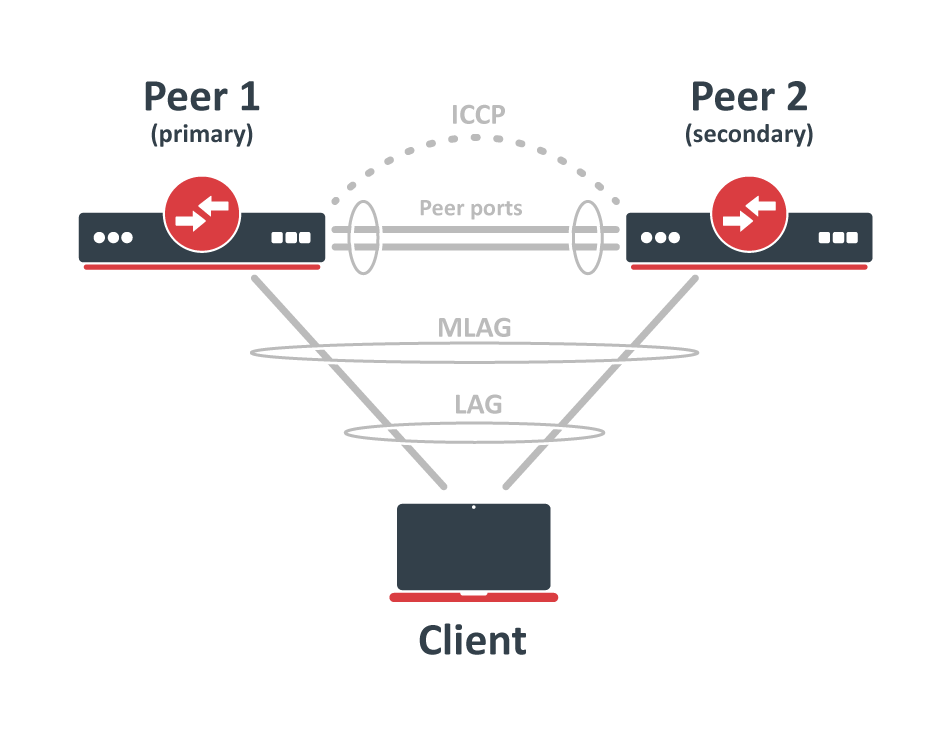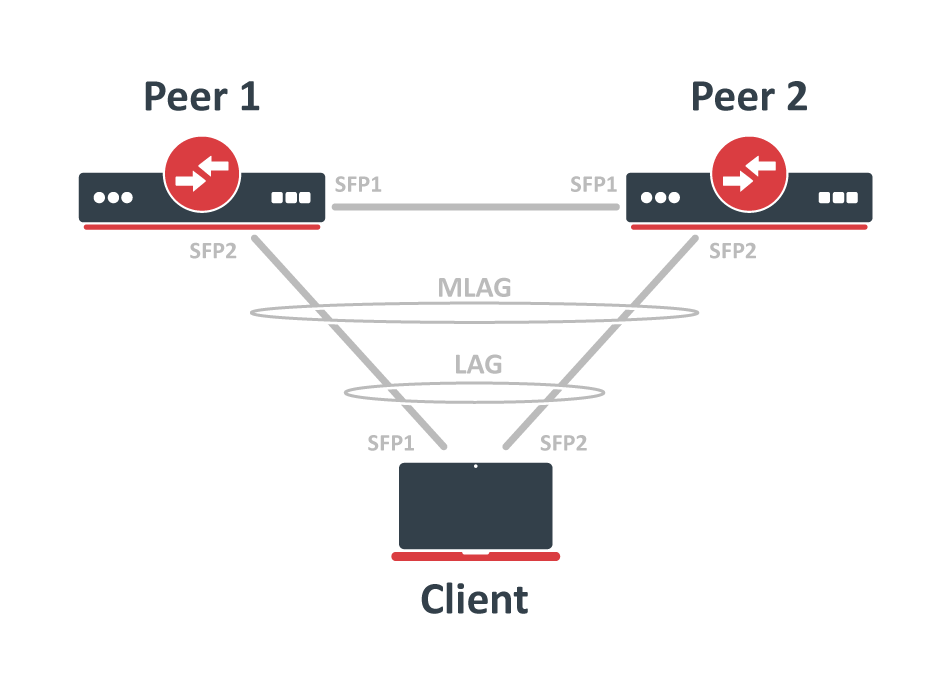Introduction
MLAG (Multi-chassis Link Aggregation Group) implementation in RouterOS allows configuring LACP bonds on two separate devices, while the client device believes to be connected on the same machine. This provides a physical redundancy in case of switch failure. All CRS3xx series devices can be configured with MLAG.
Both peers establish the MLAG interface and update the bridge host table over peer ports using ICCP (Inter Chassis Control Protocol). RouterOS ICCP does not require an IP configuration, but it should be isolated from the rest of the network using a dedicated untagged VLAN. This untagged VLAN can be configured with vlan-filtering and pvid. Peer ports can also be configured as LACP bonding interfaces.
Quick setup
in this example, CRS317 and CRS309 devices are used as MLAG peers and any device with two SFP+ interfaces can be used as an LACP client, see a network scheme below.
Below are configuration commands to create a regularLACP bonding in RouterOS for the Client device:
/interface bonding add mode=802.3ad name=bond1 slaves=sfp-sfpplus1,sfp-sfpplus2
Next, configure bonding interfaces for MLAG on Peer1 and Peer2 devices, use a matching mlag-id setting on both peer devices:
/interface bonding add mlag-id=10 mode=802.3ad name=client-bond slaves=sfp-sfpplus2
Configure bridge with enabled vlan-filtering, and add needed interfaces as bridge ports. A dedicated untagged VLAN should be applied for the inter-chassis communication on peer ports, thus a different pvid setting is used. Below are configuration commands for Peer1 and Peer2 devices:
/interface bridge add name=bridge1 vlan-filtering=yes /interface bridge port add bridge=bridge1 interface=sfp-sfpplus1 pvid=99 add bridge=bridge1 interface=client-bond
All VLANs that are allowed on MLAG ports should also be allowed on peer ports. In the previous step, peer ports were placed on a different untagged VLAN, so peer ports are now added as tagged VLAN 1 member ports (the default pvid for client-bond and sfp-sfpplus1). Other VLANs can be added if needed. Below are configuration commands for both peer devices:
/interface bridge vlan add bridge=bridge1 tagged=sfp-sfpplus1 vlan-ids=1
Last, specify bridge and peer-port to enable MLAG. Below are configuration commands for both peer devices:
/interface bridge mlag set bridge=bridge1 peer-port=sfp-sfpplus1
Additionally, check MLAG status on peer devices and make sure that Client LACP has both interfaces active.
# Peer1
[admin@Peer1] > /interface/bridge/mlag/monitor
status: connected
system-id: 74:4D:28:11:70:6B
active-role: primary
# Peer2
[admin@Peer2] > /interface/bridge/mlag/monitor
status: connected
system-id: 74:4D:28:11:70:6B
active-role: secondary
# Client
[admin@Client] > /interface bonding monitor bond1
mode: 802.3ad
active-ports: sfp-sfpplus1,sfp-sfpplus2
inactive-ports:
lacp-system-id: 74:4D:28:7B:7F:96
lacp-system-priority: 65535
lacp-partner-system-id: 74:4D:28:11:70:6C
MLAG settings and monitoring
This section describes the available MLAG settings and monitoring options.
Sub-menu: /interface bridge mlag
Property | Description |
|---|---|
| bridge (name; Default: none) | The bridge interface where MLAG is being created. |
peer-port (interfaces; Default: none) | An interface that will be used as a peer port. Both peer devices are using inter-chassis communication over these peer ports to establish MLAG and update the host table. Peer port should be isolated on a different untagged VLAN using a |
Use the monitor commands to see the current MLAG status.
[admin@Peer1] > /interface/bridge/mlag/monitor
status: connected
system-id: 74:4D:28:11:70:6B
active-role: primary
Property | Description |
|---|---|
| status (connected | connecting | disabled) | The MLAG status. |
system-id (MAC address) | The lowest MAC address between both peer bridges will be used as the system-id. |
active-role (primary | secondary) | The peer with the lowest bridge MAC address will be acting as a primary device. |
Sub-menu: /interface bonding
Property | Description |
|---|---|
| mlag-id (integer: 0..4294967295; Default:) | Changes MLAG ID for bonding interface. The same MLAG ID should be used on both peer devices to successfully create a single MLAG. |

